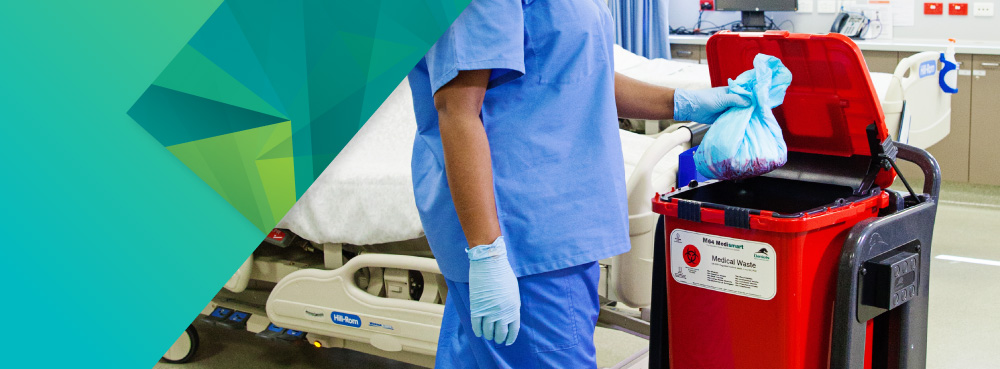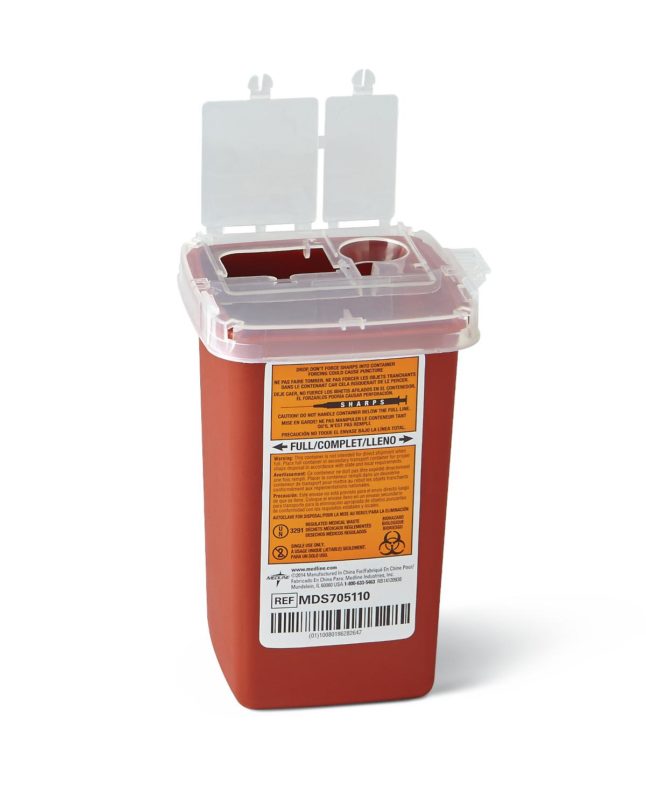Security First: Your Guide to Accountable Medical Waste Removal Services
Security First: Your Guide to Accountable Medical Waste Removal Services
Blog Article
Keep Ahead of Regulations: Professional Advice on Medical Waste Disposal
In a globe where the medical care sector is regularly progressing, it is important for medical centers to stay ahead of regulations when it comes to the correct disposal of medical waste. From understanding the different classifications of clinical waste to implementing the appropriate collection and partition methods, this conversation will certainly offer valuable understandings and actionable tips to aid centers stay in advance of guidelines in the ever-changing landscape of medical waste disposal.
Recognizing Medical Waste Categories
Comprehending medical waste groups is necessary for appropriate disposal and monitoring in healthcare facilities. Clinical waste refers to any type of waste created by health care tasks that might position a hazard to public health and wellness or the atmosphere. It is crucial to classify medical waste properly to guarantee its safe handling, transport, disposal, and treatment.
There are numerous categories of medical waste that health care centers need to be acquainted with. One of the most usual classifications consist of infectious waste, pathological waste, sharps waste, pharmaceutical waste, and chemical waste. Each classification has certain standards and regulations for its correct management and disposal.
Pathological waste refers to human cells, body organs, or body components that call for unique handling and disposal. Drug waste comprises run out, unused, or contaminated drugs that need careful handling and disposal.
Staying Up-To-Date With Regulatory Changes
Remaining current with governing modifications is critical for medical care centers to guarantee conformity and appropriate monitoring of clinical waste disposal. medical waste removal service. With guidelines regularly developing, it is important for health care facilities to stay current to prevent penalties, penalties, and prospective harm to the environment and public wellness
To stay ahead of governing adjustments, medical care facilities ought to develop a system for monitoring and tracking updates. This can be done by signing up for regulatory e-newsletters, attending conferences and workshops, and actively joining industry associations. Additionally, facilities ought to designate a team member or group in charge of staying informed and disseminating details to appropriate stakeholders.
Normal interaction with regulative agencies is likewise vital. Health care centers should develop relationships with regional, state, and federal companies to guarantee they understand any changes in guidelines that might impact their waste administration practices. This can be done with normal meetings, involvement in public remark periods, and proactive interaction with regulative agencies.
Moreover, healthcare facilities ought to consider partnering with waste management firms that concentrate on medical garbage disposal (medical waste disposal services with WasteX). These business are typically fluent in the most recent policies and can supply advice and support to guarantee compliance
Applying Correct Collection and Segregation Methods
To efficiently handle clinical waste disposal, healthcare facilities should establish appropriate collection and partition techniques in accordance with regulative guidelines. Executing these techniques makes sure the safe handling and disposal of potentially dangerous materials, safeguards the environment, and minimizes the danger of infections and injuries to healthcare workers and the public.
Proper collection and partition methods involve the usage of designated containers and classifying systems. Healthcare facilities ought to provide clearly labeled containers for different sorts of clinical waste, such as sharps, infectious waste, pharmaceutical waste, and non-hazardous waste. These containers need to be color-coded and plainly marked to avoid complication and advertise simple recognition.
In addition, healthcare facilities must educate their staff on the right treatments for gathering and segregating medical waste. This includes educating them on the various kinds of waste, the appropriate containers to utilize, see this here and the value of adhering to regulations and standards. Regular training sessions and refresher courses should be conducted to ensure that personnel stay updated on best practices.
Additionally, healthcare facilities ought to develop a system for routine collection and disposal of medical waste. This might involve partnering with qualified waste administration companies that concentrate on clinical waste disposal. These companies will make certain that the accumulated waste is transferred and thrown away in conformity with regulative needs.
Choosing the Right Disposal Techniques

Incineration is among one of the most reliable and common methods for taking care of certain sorts of clinical waste, such as pathological waste and sharps. It entails the controlled burning of waste at high temperatures, minimizing it to ash. Nevertheless, incineration can release harmful contaminants into the air and add to air pollution.

Other disposal approaches include chemical treatment, microwave treatment, and landfilling. Chemical therapy entails the use of chemicals to reduce the effects of the waste and decontaminate. Microwave therapy utilizes microwave power to warm and sanitize the waste. Landfilling includes hiding the waste in an assigned garbage dump area (medical waste disposal services with WasteX). Landfilling ought to be the last hotel due to the possible risk of contamination to dirt and groundwater.
Making Certain Conformity Through Paperwork and Training
After meticulously thinking about the appropriate disposal methods for clinical waste, healthcare centers have to make certain compliance with policies and minimize ecological influence by applying reliable documentation and training procedures. This step is important in keeping a safe and lasting environment for both healthcare workers and the basic public.

Health care employees that manage medical waste should receive proper training on waste segregation, dealing with, and disposal treatments. By providing extensive training, medical care facilities can empower their team to make informed decisions and decrease the risk of inappropriate waste disposal.
Final Thought
To conclude, staying ahead of policies in medical waste disposal is important for health care facilities. medical waste removal. Recognizing the various categories of clinical waste, remaining updated with regulatory adjustments, applying appropriate collection and partition techniques, selecting the suitable disposal methods, and ensuring conformity through documentation and training are all essential steps. By following these standards, health care companies can effectively manage and get rid of of medical waste in a risk-free and responsible fashion
From comprehending the different categories of clinical waste to implementing the best collection and segregation approaches, this discussion will give actionable pointers and beneficial understandings to assist facilities stay ahead of laws in the ever-changing landscape of clinical waste disposal. - medical waste disposal services with WasteX
The most usual categories include contagious waste, pathological waste, sharps waste, pharmaceutical waste, and chemical waste. Health care facilities must provide clearly labeled containers for various kinds of clinical waste, such as sharps, transmittable waste, pharmaceutical waste, and non-hazardous waste. Medical care facilities should establish a detailed system to record and track all elements of medical waste disposal, including types of waste Check Out Your URL generated, quantities, and disposal methods made use of. Medical care employees that manage medical waste ought to get proper training on waste segregation, handling, and disposal procedures.
Report this page